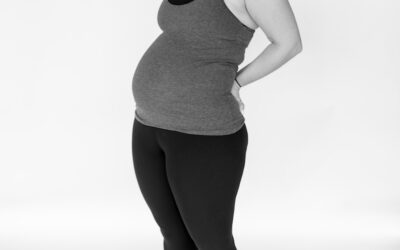It is no surprise that your body will undergo many changes during pregnancy. You are growing a tiny human, and that is hard work! You may begin to experience things that you have never felt before. You may also notice an increase in symptoms that you previously had. A very common and often uncomfortable side effect reported during pregnancy is constipation. This can occur due to a few factors:
-
An increase in progesterone levels which slow the movement of food through your bowels
-
A growing uterus which takes up more space and puts pressure on your bowels
-
An increase in vitamins and minerals, especially iron, which may be harder for your body to absorb
Signs and symptoms of constipation can be variable, but here are a few symptoms to look out for: less than three bowel movements in one week, a feeling that you are not fully emptying when you try to poop, increased straining when pooping, bloating, nausea, and general abdominal discomfort.
How to Manage Constipation Pain During Pregnancy
You may be wondering if there is anything you can do to alleviate these symptoms or if you will be destined for nine months of discomfort. The good news is that a few lifestyle changes may help provide some relief of symptoms and get you back to a more regular pooping schedule.
1) Hydration
Drink plenty of water! As poop moves through your colon, water is reabsorbed back into the body. When enough water is not readily available, poop may become very hard and dry making it difficult to pass. A good rule of thumb is to drink half of your body weight in ounces. For example, if you are 130lb, you would want to aim for 65 oz of fluid per day. Also, you can monitor your urine and aim for a pale yellow (almost clear) color.
2) Nutrition
Try to increase your fiber intake from natural food sources such as fresh fruits, vegetables, beans, seeds, and whole grains. Aim for 25-35 grams/day. Fiber helps to bulk up your poop to make it easier to pass. You can make small changes such as snacking on a handful of prunes or making smoothies with fresh fruits, veggies, and chia seeds.
Warm liquids also help to stimulate the gut, so starting off the day with a bowl of oatmeal and a warm beverage may help do the trick! Try to stay away from processed foods as these tend to contribute to constipation. In addition, smaller more frequent meals may be more manageable for your digestive system and help to keep things moving along.
3) Proper Body Mechanics
Elevate your legs on a stool or Squatty Potty and rest your elbows on your knees to help relax your pelvic floor muscles for easier pooping. In addition, try to exhale like you are blowing out birthday candles to prevent straining, Straining to poop while pregnant increases pressure on your pelvic floor and abdominal wall.
Don’t try to rush it, just sit and relax to promote complete emptying. Also, when you get the urge to go, try to go immediately. Frequently overriding the urge to go can reduce your body’s ability to sense the urge to go in the future.
4) Exercise
Movement is a great way to help stimulate gut motility. It can be as simple as starting a walking program 3-4x per week for 20-30 minutes. Finding an activity that you enjoy will make it easier to stick to a regular routine!
In addition, gentle yoga stretches such as child’s pose, happy baby, and cat/cow may help keep the pelvic floor relaxed which is important for good bowel movements.
5) Magnesium
Use a magnesium supplement such as Natural Calm which is available in a powder or gummy form. This can help improve movement through the digestive system and encourage softer poops. Always check with your doctor first before starting a magnesium supplement especially during pregnancy.
Improving constipation during pregnancy will likely take some time and require a combination of the techniques mentioned above! By slowly incorporating these techniques, hopefully, you will begin to see an improvement in your symptoms.
You may also benefit from working with a physical therapist for a thorough evaluation of your pelvic floor muscle function and a more individualized plan to help manage your symptoms throughout your pregnancy.
____________________________________________________________________________________________________
Are you currently pregnant or planning to conceive? If so, make sure to download my FREE resource — How to Prepare Your Pelvic Floor & Core for Childbirth + 8 Must-Dos for C-Section and Vaginal Deliveries.
____________________________________________________________________________________________________
Some links may be affiliate links. The products we recommend are products we use or recommend to clients.




